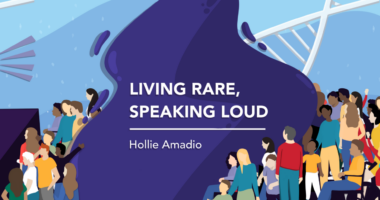Takhzyro Lowers Monthly Attacks in Adolescents with HAE, Phase 3 Trial Shows

Takhzyro (lanadelumb), an antibody already approved for routine prevention of hereditary angioedema (HAE) attacks in patients ages 12 and older, was found to safely reduce the number of monthly attacks experienced by adolescents in a Phase 3 clinical trial.
The study, “Efficacy and safety of lanadelumab for prophylactic treatment in adolescents with hereditary angioedema (HAE),” was presented at the American Academy of Allergy, Asthma and Immunology Annual Scientific Meeting in San Francisco.
Hereditary angioedema is a rare genetic disorder characterized by sudden and recurrent episodes of swelling in the face, tongue, hands, feet, gastrointestinal tract, genitalia, and upper airways.
The disease is caused by a lack of functional C1-inhibitor (C1-INH) protein, resulting in the continuous production of an enzyme called kallikrein, which, in turn, raises the levels of bradykinin, a peptide that regulates blood pressure and inflammation by dilating blood vessels. Bouts of swelling occurring during HAE attacks are caused by the overproduction of bradykinin.
Shire‘s Takhzyro is a human antibody that works by inhibiting the activity of kallikrein and preventing the overproduction of bradykinin.
The multicenter, randomized, double-blinded Phase 3 trial (NCT02586805) assessed the safety and efficacy of Takhzyro in a group of HAE patients with C1-IHN deficiency older than 12 who had experienced at least one HAE attack during the previous four weeks.
The study enrolled a total of 125 patients, including 10 (8%) adolescents between 12 and 18 years old, who were randomly assigned to receive either a placebo or Takhzyro at a dose of 150 mg every four weeks, 300 mg every four weeks, or 300 mg every two weeks.
Participants had the option to enroll in an additional open-label extension study (NCT02741596), in which they were treated with Takhzyro at a dose of 300 mg every two weeks, to assess the long-term effects of treatment and the prevalence of treatment-emergent adverse events.
Of the 10 adolescents enrolled in the study, four were treated with a placebo, one with Takhzyro at a dose of 150 mg every four weeks, three at 300 mg every four weeks, and two at 300 mg every two weeks.
Results showed that before enrolling in the study, those placed in the placebo group had a monthly attack rate (MAR) of 1.825, which decreased to 0.917 after treatment.
On the other hand, those on Takhzyro experienced higher reductions in MAR: from one to zero in the group taking 150 mg every four weeks; from 0.989 to 0.304 in the group taking 300 mg every four weeks; and from 1.948 to 0.306 in the group taking 300 mg every two weeks.
Over the course of the trial, 13 non-serious treatment-related adverse events were reported in three patients.
Of the 212 patients participating in the extension study, 21 (9.9%) were adolescents, including eight who had rolled over from the previous trial. Among those who had rolled over from the previous trial, MAR decreased from 1.65 at the start to 0.35, corresponding to a decrease of 84.37% in monthly attacks. In contrast, the remaining 13 non-rollover patients had a MAR of 1.54 at the start that decreased to 0.07 after treatment, corresponding to a 94.89% decrease.
During the extension study, a total of 65 non-serious treatment-emergent adverse events affecting nine patients were reported.
Based on these results, the researchers concluded that Takhzyro safely reduced the monthly attack rate of adolescents with hereditary angioedema due to C1-INH deficiency.





